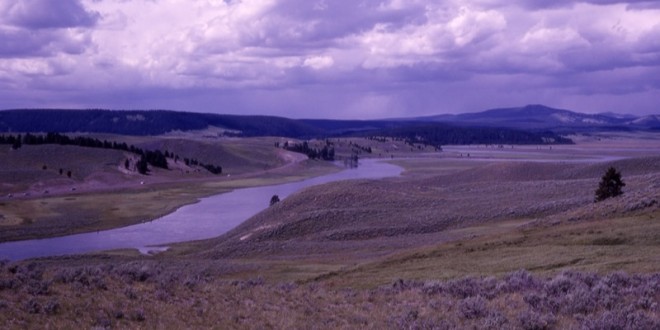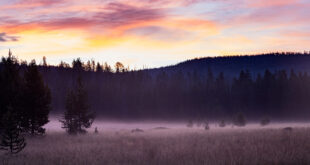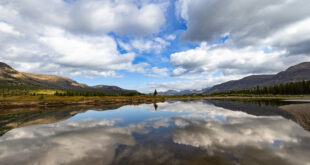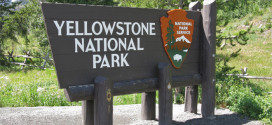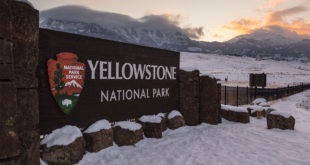A proposal to expand Yellowstone paddling on certain lakes and rivers is under consideration in Congress, and it’s certainly generated a lot of discussion online. Here are two views on exactly what’s being proposed and whether the proposal should move forward.
A little paddling won’t hurt the Yellowstone experience
By Charles Pezeshki
If we’ve gained any strength as environmentalists, it’s because we’ve stuck to science and public processes. The other stuff is for the bad guys who want to exploit public land for profit.
As a longtime activist on forest issues, I could give you lots of reasons why you should listen to me. But I’d much rather have all of us looking at the actual facts of any environmental case. That’s been our winning hand for the last 50 years.
That’s why I was discouraged recently when a controversy erupted over allowing kayaking inside Yellowstone and Grand Teton national parks. It started when environmental recreation groups such as American Whitewater petitioned Yellowstone Park to re-evaluate its policy regarding recreational paddling through the parks’ waterways. Currently, such use is mostly forbidden, but not because of kayaking. Much of Yellowstone was closed to boating in the 1950s because of overfishing.
This is not a new fight: American Whitewater has sought more permissive management of paddling in Yellowstone for several decades. Initially, the group asked that paddling be allowed on the Black Canyon of the Yellowstone River as well as a few other places. Most of these runs are wicked hard; on a scale of I-VI, they’re solid Class V and only passable by a few. So allowing these paddle runs would provide an incredible experience for those qualified to do it, yet not one that would attract the masses. Nor would it attract what some environmentalists have deemed the “beer and bacon” crowd. (And we wonder why we get accused of being elitists.)
More recently, American Whitewater asked that Yellowstone National Park include in its management plan the opportunity to paddle five newly designated wild and scenic rivers in Yellowstone and Grand Teton parks. What unspooled after this request was the Yellowstone superintendent refusing to allow any public process; the draft plan did not consider even limited paddling. That led to some local folks approaching the Wyoming congressional delegation.
Perhaps they were naïve; no one would accuse Republican Rep. Cynthia Lummis of being too green. But the Wyoming delegation is the local delegation. They’re the people you go to when you can’t get a fair hearing from administrators of our public lands.
And then, out of the woodwork, came the self-appointed environmental illuminati, and instead of looking at the process as being remotely valid, people like Mike Clark, former executive director of the Greater Yellowstone Coalition, started calling kayakers “poachers.” Lacking their own environmental street cred, paddling opponents also began channeling deceased environmentalists, like Wilderness Society notables Olaus and Margaret Murie, to make their points.
Nowhere would anyone talk about the facts of the issue, which was the marginal use of a few kayaks on a few rivers for a few weeks each year, a use that should be studied — not demonized.
Recently, a bill passed out of the House of Representatives demanding a fresh look at the issue, including new regulations on paddling rivers in Yellowstone. American Whitewater, an organization dedicated equally to conservation and access — its members have done as much for in-stream flows as any — backed out of supporting a completed version through the Senate, presumably because of the unhealthy controversy. Meanwhile, the insults keep piling up. If you listen to the enviro crowd in Bozeman, Mont., kayakers aren’t just lowbaggers; they are the spawn of Satan himself.
As a boater who cut my teeth on timber activism by kayaking pristine rivers, I’m appalled. One of the things I learned by paddling down White Sand Creek (now called Colt-Killed Creek) on the Clearwater National Forest in Idaho, was that the water was incredibly clean. The gin-clear waters of that headwater stream to the Lochsa and Clearwater rivers, both charter members of the Wild and Scenic Rivers Act, moved me to dig deeply into the science of water quality as well as activities like clear-cut logging that would affect it. That science led me to develop expertise on landslides. That meant I had to learn how to communicate my findings all the way up to then-Forest Service Chief Michael Dombeck, about the harmful effects of deteriorating roads on our national forests. And that led directly to the road-building moratorium on national forest lands in the late ‘90s. Science won the day, and I credit boating with beginning my education.
None of that’s here in the Yellowstone fight. You’ve got some environmentalists defending an anachronistic policy decision to shut out a use they don’t understand, and don’t care about. They’re misrepresenting the issue, and toadying to authority. They’re also likely to win. But when you live by bullying tactics, you also die by them. That’s a bad precedent to establish as your baseline practice when a real threat to Yellowstone comes rolling along. Because one will.
Charles Pezeshki lives in Pullman, Washington.
Paddling bill is bad news for Yellowstone and Grand Teton parks
By Bart Melton
More than 3 million visitors travel to Yellowstone National Park every year to watch wildlife, fish, backpack and hike, view geysers, and paddle around on Yellowstone’s lakes. At Grand Teton National Park, 2.7 million visitors come to climb, hike and paddle on the Snake River or on the park’s many lakes. Together, these parks are the ecological core of the larger 18 million-acre Greater Yellowstone Ecosystem. For 140 years, since the establishment of Yellowstone, these parks have appropriately balanced user-group access with conservation.
But ever since Yellowstone and Grand Teton’s earliest days, groups have lobbied managers for expanded access to park resources. Now there’s a new threat — legislation that would set a bad precedent and undermine science-based decision-making. The pressure this time comes from a bill introduced in Congress by Rep. Cynthia Lummis, R-Wyo., in late 2013.
Called the “River Paddling Protection Act,” the bill has already passed the House of Representatives. It gives the National Park Service three years to change its regulations barring non-motorized boating on rivers and streams. If the agency fails to act in that time, then boating in the two parks will be considered unregulated.
The existence of the legislation might lead one to the conclusion that boaters currently have no access to these parks. But the truth is that, of the 168 lakes within Yellowstone, only five are closed to boating. Both Yellowstone and Grand Teton already allow ample opportunities for paddling. At the same time, they make it possible for visitors to experience other lakes in a pristine natural state.
In Grand Teton, the 26-mile stretch of the Snake River that runs through the park hosts 60,000 paddlers each year. In addition, there are countless extraordinary whitewater paddling opportunities in the rivers and streams within the nearly 15 million acres of public lands surrounding Yellowstone and Grand Teton.
What would the River Paddling Protection Act do? It gives the National Park Service just three years to analyze the environmental impacts of allowing “hand-propelled vessels” on approximately 7,500 miles of Yellowstone and Grand Teton rivers and streams — roughly three times the length of the Mississippi River. If the environmental assessment and resulting rules are not in place at the end of the three years, then boaters will be allowed to use park rivers and streams as they see fit until new rules are issued. Further, this legislation would require that the National Park Service consider all types of paddle sports in its environmental review. That means Yellowstone could be opened not just to pack-rafters who want to explore the park’s backcountry, but also to commercial operators: The park would have to consider and potentially provide access to rafting and tubing companies, as well as to any other commercial operator that could argue that its vessels qualify as “hand-propelled.” This could result in a summer flood of commercial rafters and tubers.
Worse yet, this legislation provides no new park funding, although it comes with a substantial price tag. According to the Congressional Budget Office, it would cost the two parks a combined $4 million dollars in the first five years. There’s no new funding to cover the cost of reviewing impacts of new users on wildlife habitat or dealing with invasive species or search-and-rescue response. Simply doing the analysis will be costly and time-intensive for parks that are already financially starved. Keep in mind that last spring, these same parks had to turn to local communities for financial assistance to cover the cost of snowplowing just so they could open on time.
In early 2014, this legislation was packaged with a number of bills that could have negative impacts on national parks and sent to the floor of the House of Representatives. It passed there by a majority vote. Now, it is up to the Senate, where Sen. John Barrasso, R-Wyo., has introduced the bill.
The White House has opposed the House version of the legislation, and we hope it will oppose the Senate’s as well. The River Paddling Protection Act attempts to elevate the wishes of one user group above those of all the others who visit and appreciate Yellowstone and Grand Teton, and it seeks to do so without regard to sound scientific analysis and cost. This bill leaves one wondering: If we are willing to legislate special access to America’s first national park for paddle sports, who’s next in line?
Bart Melton works for the National Parks Conservation Association in Bozeman, Montana.
These articles are part of Writers on the Range, a service of High Country News. Check out hcn.org for more information.
RELATED STORIES: Expanded Yellowstone Paddling under Consideration in Congress
 Yellowstone Insider Your Complete Guide to America's First National Park
Yellowstone Insider Your Complete Guide to America's First National Park
